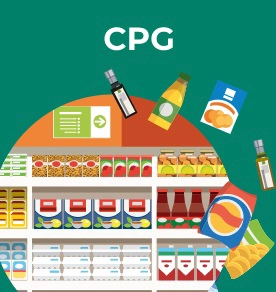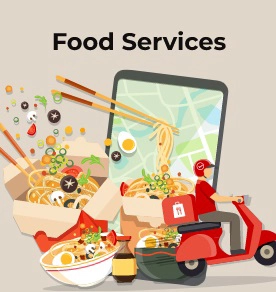Brewing the Future: Matcha in Motion

From emerging startups to premium labels, see how retailers are turning matcha tea into one of India’s fastest-growing beverage segments.
By Pallavi, Assistant Editor
Nov 05, 2025 / 8 MIN READ
The popularity of matcha tea in India is surging in 2025, extending beyond metros to Tier II and III cities. Fueled by health awareness among urban millennials and Gen Z, its presence is expanding in cafés, e-commerce platforms, and creative food offerings. Originating from Japan, this powdered green tea made from shade-grown leaves is popular as a morning drink thanks to its calming and focus-boosting qualities. In India, it is mainly grown in Assam and other high-altitude regions.
Matcha is particularly popular among fitness enthusiasts and social media influencers, who not only create trends among youths but also educate consumers. Major brands, including Starbucks, Blue Tokai, Boba Bhai, Bree Matcha, Luxmi Tea, and Café Delhi Heights, are offering matcha tea and increasing their retail presence to meet customer demand. In 2024, the Indian matcha tea market could generate around $104 million in revenue, and it is planning to reach $167.8 million by 2030.
Myths about Matcha Tea
In India, many see matcha as just regular green tea, thinking all matcha tastes the same and has the same caffeine levels, a common misconception. In reality, matcha is packed with antioxidants, provides steady energy through gradual caffeine release, and offers a distinct umami flavor when appropriately prepared. Beyond a beverage, it’s a dynamic ingredient for creative cuisine. These brands strive to blend innovation with matcha’s authentic tradition.
Shah said, “At Essenzaa Nutrition, we blend tradition with modern science. Bree Matcha reflects this balance by combining age-old customs with India’s top manufacturing, disrupting the matcha market.”
Kohli remarked, “We stay true to traditional Japanese matcha but add modern twists. Our Matcha Bubble Tea respects its origins, while fruity versions like Mango and Strawberry appeal to Indian tastes, keeping matcha authentic yet vibrant.”
Retail Presence of Matcha Tea
Bree Matcha has an online retail presence, selling through its website, Amazon, and Blinkit.
Adding to this, Shah said, “Online platforms let us reach more people, but in-store interactions add that tactile, personal touch. The real impact comes from finding the right balance between the two.”
Café Delhi Heights has a presence in about 47 outlets in India. Focusing on its presence, Chef Singh shared, “Matcha is a sensory experience; live whisking, graceful presentation, and the infusion of local flavors make it truly special. Our cafés bring that immersive experience to life, while online, we extend it through curated kits and festive editions. The future lies in ready-to-drink formats and gifting options, though the bigger task is educating consumers on quality and value.”
Boba Bhai has around 77 store outlets in India. Talking about the brand’s retail presence, Kohli added, “To truly understand matcha, people need to experience it first-hand, through tastings, storytelling, and rituals that bring its tradition to life. Our goal is to educate people about authentic, high-quality matcha while staying true to our roots.”
Luxmi Tea’s retail presence extends across premium malls, airports, and stores such as Spencer’s and Nature’s Basket. The brand operates outlets at Kolkata, Bagdogra, and Mumbai airports, as well as at Spencer’s in Quest Mall, and is planning new stores at the Pune and Varanasi airports. Chatterjee noted, “Educational content plays a big role in fostering awareness, while consistent product quality drives loyalty. Listening to feedback helps us adapt to changing preferences without losing authenticity.”
Consumers’ Satisfaction and Feedback matter
To build a long-term relationship with consumers, every brand has its own strategy to deliver the best experience by maintaining proper communication and messaging.
Shah explained, “Our approach centers on transparency, education, and community. We share content on matcha rituals and wellness, ensuring quality and service while refining offerings through feedback.”
Kohli added, “We thrive on consistency, community, and creativity. Quality stays uniform across outlets, while seasonal flavors, limited drops, and real conversations strengthen customer bonds.”
Chef Singh commented, “Trust comes from consistency, creativity, and a customer-first focus. Festivals, loyalty programs, and exclusives help us innovate through guest feedback.”
Chatterjee added, “Retail should be sensory and educational. Labeling and sampling help people understand matcha, while online reach and in-store experience ensure consistency. With growing awareness, education against poor-quality substitutes is essential.”
The Future of Matcha Tea in India
As demand for matcha tea in India grows, brands are now experimenting more in this segment and introducing new flavors and health-focused products.
Shah said, “Matcha is evolving from a health niche to a mainstream lifestyle choice, valued for energy, focus, and mindful living. Growth will come from functional blends and daily rituals, with a focus on education, authenticity, and accessibility to make matcha a go-to for balanced energy.”
Similarly, Kohli highlighted, “Matcha is becoming a regular favorite in bubble teas, ready-to-drink options, and home kits. Driven by young consumers, demand for premium, creative flavors like Classic, Mango, and Strawberry is rising, emphasizing taste, quality, and experience.”
Chef Singh, too, added, “Matcha will expand beyond lattes into desserts, skincare, and wellness snacks, with local flavors and functional blends making it a symbol of wellness and indulgence.”
Chatterjee concluded, “Matcha will soon be a daily ritual like coffee or tea, with growth in RTDs, functional blends, and food uses.”
The popularity of matcha tea in India is surging in 2025, extending beyond metros to Tier II and III cities. Fueled by health awareness among urban millennials and Gen Z, its presence is expanding in cafés, e-commerce platforms, and creative food offerings. Originating from Japan, this powdered green tea made from shade-grown leaves is popular as a morning drink thanks to its calming and focus-boosting qualities. In India, it is mainly grown in Assam and other high-altitude regions.
Matcha is particularly popular among fitness enthusiasts and social media influencers, who not only create trends among youths but also educate consumers. Major brands, including Starbucks, Blue Tokai, Boba Bhai, Bree Matcha, Luxmi Tea, and Café Delhi Heights, are offering matcha tea and increasing their retail presence to meet customer demand. In 2024, the Indian matcha tea market could generate around $104 million in revenue, and it is planning to reach $167.8 million by 2030.
Related Stories
The popularity of matcha tea in India is surging in 2025, extending beyond metros to Tier II and III cities. Fueled by health awareness among urban millennials and Gen Z, its presence is expanding in…
- By Pallavi
- |
- 8 Min Read
Mughlai cuisine is renowned for the richness and aromaticity of its dishes, due to the extensive use of spices such as saffron, cardamom, and black pepper. Mughlai cuisine, with its rich heritage and…
- By Pallavi
- |
- 7 Min Read
The Indian grocery retail landscape is undergoing a quiet but powerful disruption with the rapid rise of private labels. From ecommerce giants like Amazon and Flipkart to new-age retailers such as…
- By Richa Fulara
- |
- 9 Min Read




